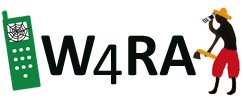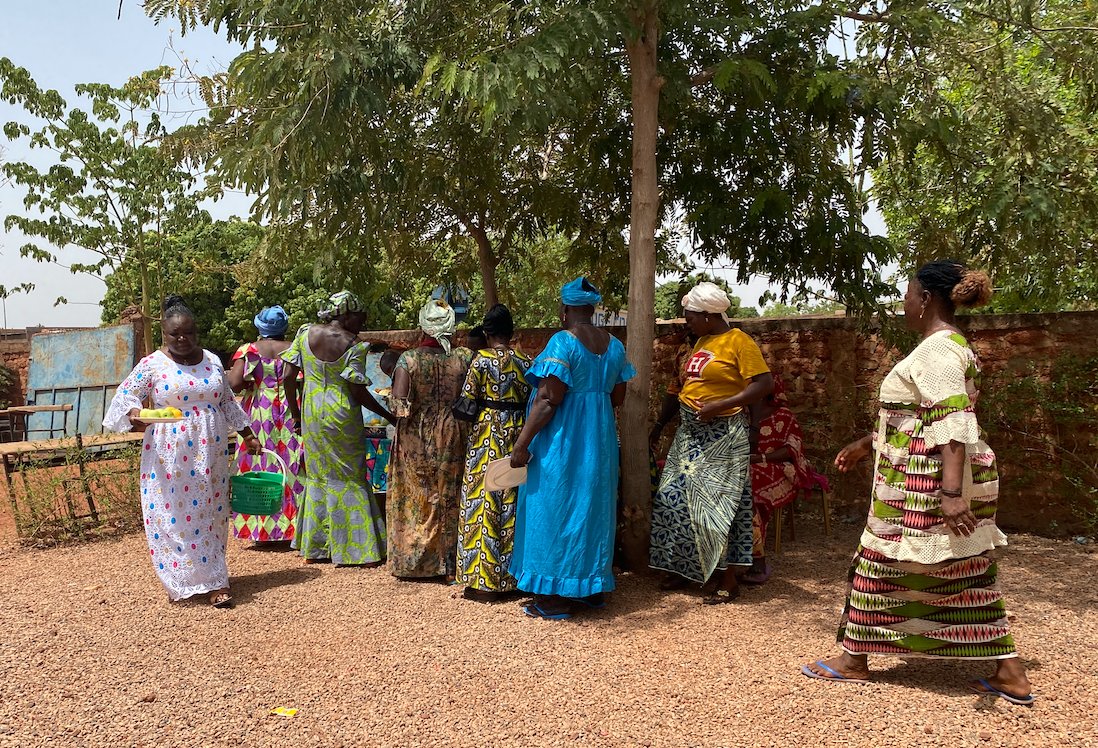By Judith Schermer, student ICT4D master course @VU 2018
On the 27th of May, the fifth annual symposium on Perspectives on ICT for Development (ICT4D) was held at the Vrije Universiteit Amsterdam. This essay summarizes the subjects that were discussed and the presentations that were held.
ICT4D is aimed at how the benefits of ICT can be evenly divided between society to bridge the gap between the rich and poor [1] and to bridge the Digital Divide. ICT4D projects use information and communication technologies to improve life in the Global South. For example, they concern agriculture, healthcare, education and money transfer. Those and more objectives are covered in the 17 Sustainable Development Goals (SDGs), introduced by the United Nations in 2015. They are a follow-up of the Millenium Development Goals (MDGs) that were established in 2000 and were planned to be accomplished in 2015. The SDGs are again planned to be achieved fifteen years later, in 2030. The SDGs are conceptualising development and thereby ICT4D. The set of 17 goals encompassing 169 targets were the outcome of several years of consultations with governments, international organisations, the private sector, academia, and civil society [2].
The SDGs contribute to successful ICT4D projects, because it provides a framework in which people can clearly indicate the goals of the project. It is advised to always, when doing projects for development, state the SDGs that are aimed for. One of the differences between the MDGs and SDGs is that the targets included in the SDGs are focused on the whole world: developed and developing countries are both involved and should both develop. Challenges for countries in the Global North, the developed countries, are for example sustainable production and climate change.
The SDGs should be seen as a network of goals, that are all interconnected. One goal affects the other, and vice versa. For example, if the quality of education (SDG 4) improves, also poverty will be reduced (SDG 1). Also, if the quality of education improves by using a lot of computers or other technology, this will negatively affect SDG 13: Climate Action, since the computers use energy and are made of materials that damage the environment. Hence, whenever doing an ICT4D project (or a charity project in general), one should take the side effects of the project on other SDGs into account, and make an assessment whether the project will have more positive than negative effects. Then, if it turns out that the project is actually hindering development more than doing any good, one should
decide not to do the project [2].
The Web Alliance for Regreening in Africa (W4RA) is an organization that supports farmer-managed regreening activities, specifically by enhancing information, communication and knowledge sharing for rural development [3]. Hence, their goals are concerned with SDG 13: Climate Action and SDG 15: Life on land. The African dry forests and woodlands cry for attention as they continue to degrade and desertification to set and intensify. Africa is the driest of the world continents with 45% of its landmass falling under drylands [4]. Forest degradation is due to physical factors, such as wind erosion and water erosion, and due to human activities, such as farming and deforestation [4].
The forest degradates faster than new trees are planted. The World Resources Institute developed six step to success for scaling up regreening [5]:
- Identify and Analyze Existing Regreening Successes;
- Build a Grassroots Movement for Regreening ;
- Address Policy and Legal Issues and Improve Enabling Conditions for Regreening;
- Develop and Implement a Communication Strategy;
- Develop or Strengthen Agroforestry Value Chains And Capitalize on the Role of the Market in Scaling Up Regreening;
- Expand Research Activities to Fill Gaps in Knowledge About Regreening. The W4RA is concerned with the development and implementation of information and communication strategies.
André Baart presented the Kasadaka, that concerns SDG 9: Industry, Innovation and Infrastructure. The Kasadaka (‘’talking box’’) is a rapid prototyping platform for the rural poor. In rural Africa, there is a great need for information exchange. However, challenges are faced when trying to conform to this need while using technology, as we do here (in the Global North) all the time. Namely, there is no internet, no electricity and temperatures are high. Moreover, there is a high illiteracy rate and poverty. Simple mobile phones (“dumb phones’’) are common, though. Hence, phones can be used to exchange information and that is one of the things that the Kasadaka makes use of.
Part of the Kasadaka is the Voice Service Development Kit. This is a tool that can be used to generate VoiceXML files very easily. With VoiceXML files, a voice application can be made. The Kasadaka can be used to make voice application in multiple languages. Developers have to record audio files and then upload them to the Kasadaka system. Also, Kasadaka can track caller IDs and call sessions. The Kasadaka system is tested by students from the ICT4D course at the VU, but plans for the future are to use the system to allow for people living in rural Africa (or other rural areas with similar circumstances) to make their own voice applications [6].
Students of the ICT4D course at the VU used the Kasadaka to develop voice applications on their own. Examples of voice services are Marprice and MaMoisson. Marprice is an application that gives Ghanaian farmers the current price for a crop, so that they know how much to ask for their harvest.
Currently, farmers have to go to a market leader and ask for the price. This is of course time consuming. In addition, one has to visit the market leader often, since prices are fluctuating. Marprice allows for easy access to the market prices, namely by calling to the voice system. Using DTMF, callers enter their crop of interest and get the information that they need.
MaMoisson is a voice service that provides farmers with information on crop fertilization.
The fertilizer advice is based on the crop and on the age or phase (flowering or planting) that the crop is in. The advice consists of one or more fertilizers, the amounts that should be used and the amount of times a year that a farmer should use this fertilizer. Currently, they get this information via Farming Officers that give workshops. MaMoisson will save the Farming Officers a lot of time, since they will be able to provide the information for the voice service using a web interface, and it will be accessible to the farmers at all times, by just making a phone call.
Another project that concerns rural Africa is a tool that gives information on water quality. This helps people to determine whether they can drink the water or whether it can be used for farming. The traditional way of measuring water quality is costly and time consuming. Again, this is a device that will save a lot of time and provides continuous access on the data [7]. Moreover, tools are developed that give weather information access in rural Ghana [8].
Unfortunately, ICT4D projects have a high failure rate. One of the reasons for this is that projects are not sustainable, so whenever funding stops, the project stops as well. So, then, people can only temporarily profit from this new technology, while the desire is to build or do something that lasts.
Agile software development can improve ICT4D projects by facilitating user collaboration, improving team communication, enhancing organizational learning and by frequently delivering software. However, cultural understanding and trust of end-users must be build [1].
Although there are many possible explanations for these failures, they can be summarized into three categories: a lack of sustainability (1), as mentioned previously, evaluation (2) and scalability (3) [9]. The literature study of M. Keijdener, S. Overbeek and S. España presents seventeen factors that affect scalability. Moreover, a proposition is given of when these factors affect a project and in which phase of the development process they should be dealt with. This way, developers of an ICT4D solution can incorporate these factors during the development process, resulting in an easier scaling of the solution if desired (assuming their project has successfully met local needs) [9].
To summarize, on this day, we have seen the 17 Sustainable Development Goals, how they are interconnected and how they provide a framework to align ICT4D projects. Moreover, we have seen how ICTs can have a huge impact, for example in the regreening of Africa. We have been introduced to technologies that have only been developed recently, such as the Kasadaka, Marprice and MaMoisson, that seem promising for the future. Lastly, we have learnt about the way we should deploy ICT4D projects. Agile software development promises to be helpful in creating more successful, sustainable projects. In addition, we know which factors influence the scalability of ICT4D projects, and how and when we should deal with them.
References
[1] Improving ICT4D projects with Agile software development , J. Dijkers, S. Overbeek, S. España,
2018.
[2] ICT for Development in a Post-2015 World: How to conceptualise ICT4D in the context of the
Sustainable Development Goals , Franz-Ferdinand Rothe, 2018.
[3] W4RA , https://w4ra.org/ , accessed on 1 June 2018.
[4] Forests and woodlands degradation in dryland Africa: a case for urgent global attention, Bernard
N. Kigomo , FAO, http://www.fao.org/docrep/ARTICLE/WFC/XII/0169-B3.htm , accessed on 1 June
2018.
[5] Can communication help speed up the greening of Africa’s drylands? , Chris Reij, Powerpoint
Presentation, ICT4D Symposium 2018.
[6] Kasadaka: a voice service development platform to bridge the Web’s Digital Divide , A. Baart, A.
Bon, V. de Boer, W. Tuyp, H. Akkermans, 2018.
[7] Measuring surface water quality using a low-cost sensor kit within the context of rural Africa , A.
Oelen, C. van Aart, V. de Boer, 2018.
[8] Information Access for Development: Weather Information Access for Rural Ghana , Francis
Dittoh, Powerpoint Presentation, ICT4D Symposium 2018.
[9] Scalability factors in an ICT4D context , M. Keijdener, S. Overbeek, S. España, 2018.




